The Annapurna Base Camp Trek is a moderately challenging adventure that is renowned for offering stunning mountain panoramas. It stands out among Nepal’s most popular trekking trails, attracting adventurers from all over the world. The spectacular landscapes, vibrant culture, and a chance to see the clear views of Annapurna I, Hiunchuli, Annapurna South, Machhapuchhre, Dhaulagiri, Nilgiri, Hiunchuli, and many other nearby peaks are notable highlights of the trek.
Even though the trek is rewarding, you need to be aware of the challenges. The trek’s highest point is Annapurna Base Camp itself which takes you to an elevation of 4,130 meters. To reach the ABC, you have to navigate the diverse landscapes ranging from terraced farmlands, dense forests, several villages, and high-altitude landscapes.
The path includes several steep sections that can test your endurance, particularly on long trekking days. The fluctuating weather conditions, traversing through steep high altitude areas for long hours, are the major factors contributing to the Annapurna Base Camp Trek difficulty.
Despite these obstacles, the ABC trek is well worth it. With proper planning, physical fitness and acclimatization, the majority of trekkers can make it to the base camp of Annapurna safely with incredible memories.
Being familiar with the trek challenges and adequate preparation ensures a successful journey, rewarding you with beautiful scenery and personal fulfillment as you navigate the varied terrains of this spectacular region.
Factors Contributing to the Annapurna Base Camp Trek Difficulty
High Altitude
When you are trekking in the Himalayas, the altitude may affect your body, which is one of the key aspects that contribute to the difficulty of the Annapurna Base Camp Trek. The trek’s highest point is at 4,130 m. While trekking, you will be at places above 2,500 m, which are considered high-altitude areas. In these areas, there is a risk of altitude sickness.
Your journey usually kicks off with a drive from Pokhara to Hile. From there, you will gradually make your way up through scenic high-altitude places like Ghorepani (2,845 m), Poon Hill (3,210 m), Dovan (2130 m) and Machhapuchhre Base Camp (3720 m) to finally reach Annapurna Base Camp at 4,130 m.
Even though the altitude isn’t extremely high, it can lead to altitude sickness and you may be exhausted. Likewise, you may lose your motivation to continue the journey if you don’t pace yourself. So, it is crucial to be attentive to your body’s reaction while ascending.
Some common signs are headache, appetite loss, difficulty falling asleep, dizziness, fatigue and shortness of breath. If you notice any of these signs it is essential to talk to your guide immediately. Ensuring trekking at a slow pace to adjust to higher zones is essential. You need to stay safe and healthy on trails of Annapurna.
Long Trekking Hours
The standard itinerary of the Annapurna Base Camp Trek is 13 days. However, the trek’s duration may vary according to the chosen route and walking pace of the individuals. The trek has around 9 to 10 walking days. You will cover long distances on your feet for 5 to 7 hours.
The uphill climbs, rocky paths and thin air can make the trek feel harder. The long trekking hours can make you feel tired. Thus, it is essential to trek gradually and take small breaks when required.
Varied Trails
During the Annapurna Base Camp Trek, you will witness incredible changing scenery each day. You will pass through villages, farmlands, and lush forests. In addition, you will also cross suspension bridges and navigate the streams, rivers, and high-altitude terrains to get to the base camp. The trails are varied which makes the trek exciting. However, it also demands endurance and constant focus.
The trail conditions vary according to the season. The monsoon months bring muddy and slippery paths. This can make traversing difficult. In the winter season, there may be snow and ice at the higher sections of the trails. These conditions can slow you down. In addition, they can make the trek more challenging. So, checking the real time weather and trail conditions is essential before going for the trek.
Weather Fluctuations
The weather in the high altitude areas is generally unpredictable. The trail has steep and uneven paths. Moreover, sudden changes in weather like rain, snow or thick fog can slow you down. It can reduce visibility. The navigation can also be trickier.
You need to have the right equipment like layered clothing and waterproof jackets to handle weather related challenges. This helps you adjust to sudden temperature dips or unforeseen changes that may arise while trekking.
Seasonal weather patterns also have impact on trek’s difficulty level. The best time for ABC trek is during spring and autumn. In these seasons, weather is mostly stable. Likewise, the likelihood of sudden rain showers or snow is low at this time. So, trekking paths are dry.
The paths are ideal to traverse. Though the unpredictable nature of weather in the Himalayas can make conditions swift quickly even in these peak seasons, it is manageable with adequate preparation. Generally, the ideal trekking seasons present favorable trekking environment.
However, in winter and monsoon/ summer (off seasons), the difficulty level of the Annapurna Base Camp trek is relatively higher. The monsoon season (June to August) brings heavy rain, which turns trails muddy and slippery.
In winter (December to February), the weather is extremely chilly. In addition, the high-altitude areas of the trekking route are covered with snow, making them slippery. Some passes may even be impassable.
While the off season trekking may have a unique charm, the trail conditions and weather during these months can raise the trek difficulty. Thus, being well prepared, selecting the right time and being flexible is the most effective way to tackle this difficult aspect of the Annapurna Base Camp trek.
Tips to Tackle the Annapurna Base Camp Trek Difficulty
Physical Preparation
The Annapurna Base Camp Trek difficulty level is moderate, which is manageable with proper preparation. Still, a good amount of physical strength is needed.
Physical Preparation is essential to stay fit during the Annapurna Base Camp trek. It helps you to ensure a smooth Annapurna Base Camp trek. This trek does not require you to have technical knowledge. However, there are some steep sections and uneven paths that may drain you. So, having physical strength is essential.
If you train for the trek, you will have good physical strength, which allows you to navigate the varied terrains more easily. Most people train for about 3 to 6 weeks, including strength and cardio exercises.
You can concentrate on doing cardio exercises such as running, swimming, cycling, climbing stairs, etc. Likewise, strength exercises such as planks, deadlifts, squats, push-ups, pull ups can also help you to get physically prepared for the trek.
Acclimatization
While reaching Annapurna Base Camp, the altitude gradually increases which can lead to altitude sickness. The key to staying safe is giving your body enough time to adjust as the air gets thinner when you ascend to higher altitudes. Some tips for acclimatization are as follows:
- Don’t ascend too quickly. Ensure a gradual pace while trekking.
- Eat nutritious meals.
- Stay hydrated.
- Add an acclimatization day in your itinerary.
- Get to the lower zones immediately if symptoms persist.
- You may consider taking medication for altitude sickness. However, talking to your doctor and taking advice about its use and dose is highly recommended.
Mental Preparation
On the Annapurna Base Camp Trek, you will be at a serene place that can feel unfamiliar. The routes are varied and the weather in this region can also quickly change. Being in the Himalayan terrains and walking for a long distance requires you to have mental resilience.
When you aren’t prepared for the trek mentally, the trek can feel more strenuous. Here are a few simple ways to build the mental resilience for the ABC trek.
- Keep realistic expectations. Research about trails, accommodation and weather conditions in the Himalayas as it helps you adjust and be calm to unexpected changes.
- Look forward to the positive aspects and rewards that you will get when you finally achieve your goal.
- Practice deep breathing techniques and focus on meditation. These simple techniques can help you to be calm during the tough moments on the trail.
- Communicate with your trekking crew or fellow trekkers to stay motivated. Be supportive of each other. It can help ease the stress during the tough moments.
- Set achievable goals to gain confidence. Realistic goals on each day allow you to feel a sense of accomplishment which will motivate you to move forward.
- Be flexible when plans need adjustments because of unexpected events.
Right Packing
Packing all essentials thoughtfully is a must during a high altitude adventure like Annapurna Base Camp Trek. The climate in the Annapurna area changes quickly. As you ascend to the higher zones, weather is mostly chilly. So, packing layered clothes is a must. With layered clothing you can easily adjust to changing temperatures at different altitudes.
In addition, a good pair of trekking boots is a must to walk on the varied terrains. Likewise, you will also need other essentials that are required to maintain hygiene during this Himalayan journey. Here is a list of trekking items that you must pack to ensure smooth and comfortable Annnapurna Base Camp Trek:
Clothing
- Quick drying T-shirts
- Moisture wicking warm thermals
- Durable trekking pants
- Waterproof pants
- Beanie
- Rain pants and jackets
- Down jackets
- Fleece jackets
- Quick drying undergarments
- Warm gloves
- Sun hats
- Buff
- Scarf
- Down Vests
Essential Documents
- Valid passport
- Nepal visa
- Trekking permits
- Travel insurance
- Cash
Footwear
- Waterproof trekking boots
- Trekking sandals
- Woolen socks
- A pair of slippers
- Liner Socks
- Gaiters
Trekking Gears
- Daypack
- Sleeping bag
- Flashlights
- Trekking poles
- Headlamps
Trekking Essentials
- Biodegradable soap
- Small first aid kit with essential medicines
- Wet wipes
- Lip balm
- Suncream
- Tissue paper
- Hand sanitizer
- Trekking route map
- Emergency whistle
- Insect repellent
- Energy Snacks
- Oral Rehydration Solutions
- Water purification tablets
- Power bank
- Lightweight snacks
- Reusable water bottle
- Small notebook
Select the Right Time for Booking
Choosing the right time of year for your Annapurna Base Camp trek is essential. Good timing helps you complete your Himalayan adventure comfortably. Trekking during the best seasons (Spring and Autumn) provides the best trekking conditions. By selecting spring and autumn months for the ABC trek, you can enjoy trekking when skies are clear, climatic conditions are stable. Likewise, the temperature in these periods is moderate, that are perfect for exploration.
The Spring and Autumn months are also renowned for presenting stunning views of the Himalayan landscapes. The ideal trail and weather conditions of these months can help your trek feel more manageable and joyful. These peak seasons are gifted with good weather, which helps you stay secure and get rewarded with a memorable journey in the Annapurna Region.




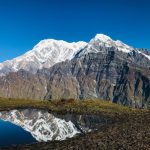 Saturday, August 30th, 2025
Saturday, August 30th, 2025
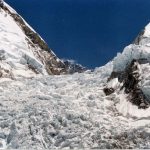 Wednesday, August 27th, 2025
Wednesday, August 27th, 2025
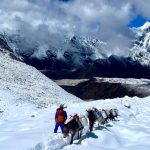 Wednesday, August 20th, 2025
Wednesday, August 20th, 2025
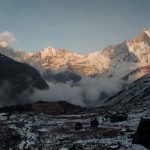 Wednesday, August 20th, 2025
Wednesday, August 20th, 2025
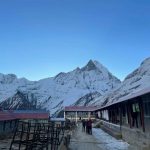 Wednesday, August 13th, 2025
Wednesday, August 13th, 2025
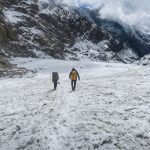 Wednesday, August 6th, 2025
Wednesday, August 6th, 2025
 Monday, July 7th, 2025
Monday, July 7th, 2025
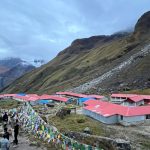 Thursday, July 17th, 2025
Thursday, July 17th, 2025
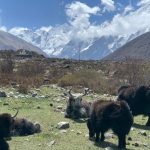 Monday, July 7th, 2025
Monday, July 7th, 2025
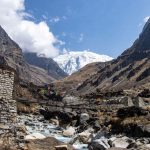 Friday, May 9th, 2025
Friday, May 9th, 2025
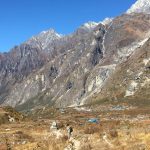 Saturday, June 14th, 2025
Saturday, June 14th, 2025
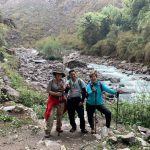 Wednesday, June 25th, 2025
Wednesday, June 25th, 2025
 Tuesday, August 5th, 2025
Tuesday, August 5th, 2025
